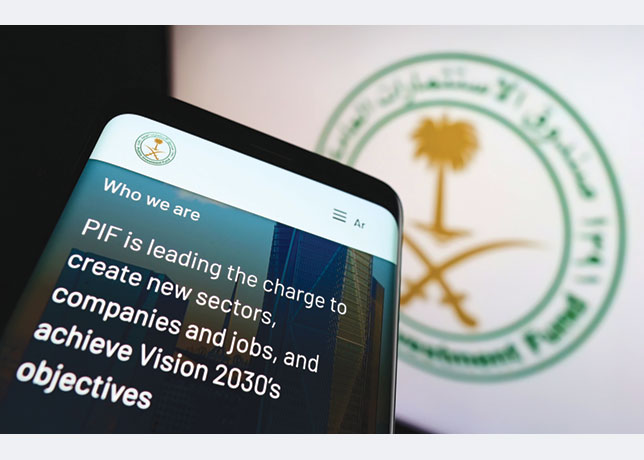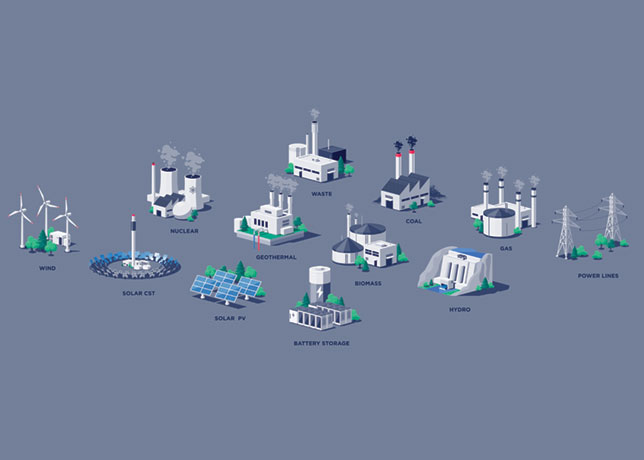
 A CO2 capturing plant in Hawiyah, KSA
A CO2 capturing plant in Hawiyah, KSA
With ambitious targets for emissions reduction, the Kingdom is not only investing in diverse energy sources and technologies like CCUS, but also pioneering regulatory frameworks and fostering collaboration
Sustainability is a key part of Saudi Arabia’s Vision 2030 as the Kingdom strives towards a net-zero future by 2060.
With a commitment to clean energy and sustainability, the Kingdom is leading the charge in the Middle East and North Africa (Mena) region in tackling energy and climate challenges with innovative solutions such as the Circular Carbon Economy (CCE) and an increasingly diverse energy mix, in which 50 per cent of energy will come from renewable sources by 2030.
Two new reports published by the International Energy Forum (IEF) say the region can achieve this by developing regulatory and incentive frameworks, promoting research and development, strengthening policy dialogue, and facilitating regional integration.
The 'CCUS Regulatory and Policy Landscape: A Global and Mena Perspective' report found that there was a wide divergence of CCUS regulatory maturity between countries.
Meanwhile, the 'Market Assessment for CCUS in Mena Region' report found that the cost of CCUS is projected to decline significantly due to technological advancements, economies of scale and standardisation.
It highlights the importance of regional collaboration to bring CCUS projects to fruition at the required scale for cost reductions to materialize.
Governments and industry can facilitate investment in CCUS technologies and scale deployment by enhancing collaboration in the Mena region and beyond, the two reports found.
The reports on carbon management in the Mena region will support countries in expanding the deployment of CCUS and achieving their climate goals.
Published in collaboration with the Circular Carbon Economy Regional Collaboration, the reports explore opportunities and challenges for expanding the role of CCUS in the Mena region through the lenses of regulatory frameworks and market growth.
"The IEF is pleased to contribute to the development of carbon management technologies by providing member governments with objective research on regulatory systems and market growth of carbon capture use and storage," said Joseph McMonigle, Secretary General of the IEF.
CCUS deployment must reach at least 5.6 Gigatons of CO2 by 2050 globally from 40 million tons today to meet the Paris Agreement and UN Sustainable Development Goals, according to the IEF.
KSA DRIVES CCUS GROWTH IN MENA
Through initiatives like Saudi Green Initiative (SGI), the Kingdom, which is the largest economy in the region, aims to reduce carbon emissions and to protect the environment.
Under the Saudi Green Initiative (SGI), the country is taking a multidimensional approach to emissions reduction.
 |
Figure 1 ... Top six largest operational CCUS projects by capacity in Mena |
Beyond a domestic energy mix transformation, SGI is steering a range of ambitious initiatives that will reduce emissions. These include investing in new energy sources, improving energy efficiency, and developing a carbon capture and storage programme.
The initiative also includes plans to plant 10 billion trees and reduce carbon emissions by 278 million tons per annum (Mtpa) of CO2e by 2030, while going net-zero by 2060.
Considering carbon capture, use and storage (CCUS) is seen as a key tool for mitigating climate change particularly in regions that are rich in oil and gas, such as Mena, Saudi Arabia is investing significantly in CCUS solutions in removing heavy emissions from hard-to-abate sectors.
The timeline of these initiatives began in 2021 when the Public Investment Fund (PIF) announced the development of a dedicated platform for the exchange of carbon credits.
In 2022, the PIF Voluntary Carbon Market company was established, focusing solely on operating carbon exchange.
Additionally, Saudi Arabia implemented its certificate issuance mechanism, the Greenhouse Gas Crediting and Offsetting Mechanism (GCOM), which was designed to cater to KSA’s national circumstances and enable the development of technologies that play a pivotal role in Saudi Arabia’s strategy to address climate change, including CCUS technologies.
 |
Source: IEA, desk research, Roland Berger |
GCOM aims to incentivise entities within Saudi Arabia by rewarding them for their activities that successfully reduce emissions beyond the standard environmental regulations and best practices.
Ongoing and planned projects in Saudi Arabia, Qatar, the UAE, and Kuwait are setting the basis for the development of a CCUS market in the region.
CCUS capacity in the Mena region has grown faster 19 per cent between 2015 and 2030 than the expected growth (2 per cent) in emission levels during the same period.
Despite this growth, it is estimated that only 1.5 per cent of the potential market will be captured in 2030 with the current operational and planned CCUS capacity, indicating the potential for significant additional investments in CCUS projects in the region.
The MENA region’s market share is projected to decline from 8 per cent in 2022 to 6 per cent in 2025, mainly due to the high number of CCUS projects planned in Europe.
Globally, the Americas are projected to lead the CCUS market by 2025 with a share of 66 per cent, followed by Europe with 18 per cent share.
There are six CCUS projects currently operational in the Mena region. These are located in Qatar, Saudi Arabia, the UAE and Iraq (Figure 1).
Qatar has two CCUS projects in operations with a total capacity of 2.3 Mtpa, followed by Saudi Arabia with a total capacity of 1.3 Mtpa divided over two projects.
The UAE and Iraq both have one project with a capacity of 0.8 Mtpa and 0.3 Mtpa, respectively.
Some 71 per cent of the planned CCUS projects in the Mena region are large-scale (1– 5 Mtpa) projects, compared to c.17 per cent of the projects in operation.
While other countries have not specified long-term CCUS targets, Saudi Arabia says it will develop 44 Mtpa by 2035.
Saudi Arabia’s Jubail CCS hub, with a total capacity of 9.0 Mtpa, will be commissioned by 2027 (Figure 2).
COLLABORATION TO ADVANCE CCUS
In 2020, Saudi Arabia launched the Circular Carbon Economy Regional Collaboration (CCERC) that aims to foster regional collaboration for the implementation of CCE technologies across four cooperation pillars: Technical knowledge building, human capability building, policymaking and joint investments.
The kingdom is also part of the Carbon Management Challenge along with 21 other nations. This ambitious initiative centers around accelerating the development and deployment of CCUS technologies.
The primary objective of the challenge is to set mid and long-term capacity targets to strengthen predictability and foster innovation and collaboration in the field of CCUS, accelerating deployment and encouraging the development of cutting-edge technologies that can significantly reduce carbon emissions.
In February, speaking at the 14th Symposium on Energy Outlooks in Riyadh, McMonigle warned that unprecedented uncertainty over the energy transition is eroding investor confidence and undermining energy security and transition goals.
He also said: "There is no single linear path for energy transitions," adding that transitions would be multi-dimensional, operating at different speeds, from different starting points and driven by national priorities.
REGULATORY FRAMEWORKS
In terms of CCUS-specific regulations, Saudi Arabia, the UAE, Qatar, and Egypt have not implemented any specific laws or regulations yet. However, there are positive developments in these countries towards the development of CCUS technologies.
Through the National Circular Carbon Economy Program, Saudi Arabia is creating a favourable environment for CCUS.
The Kingdom provides financial support through channels like the Aramco Future Investment Initiative and the Public Investment Fund Green Finance Framework.
In conclusion, Saudi Arabia's commitment to sustainability, exemplified through initiatives like the SGI and CCERC, underscores its pivotal role in driving CCUS growth in the Mena region.
With ambitious targets for emissions reduction and net-zero by 2060, the Kingdom is not only investing in diverse energy sources but also pioneering regulatory frameworks and fostering collaboration.
Reports from the International Energy Forum highlight the necessity of regional integration and policy dialogue to accelerate CCUS deployment.
As global energy transitions evolve, Saudi Arabia's proactive approach sets a precedent for meaningful action towards a cleaner, more sustainable future.
By Abdulaziz Khattak



























































































